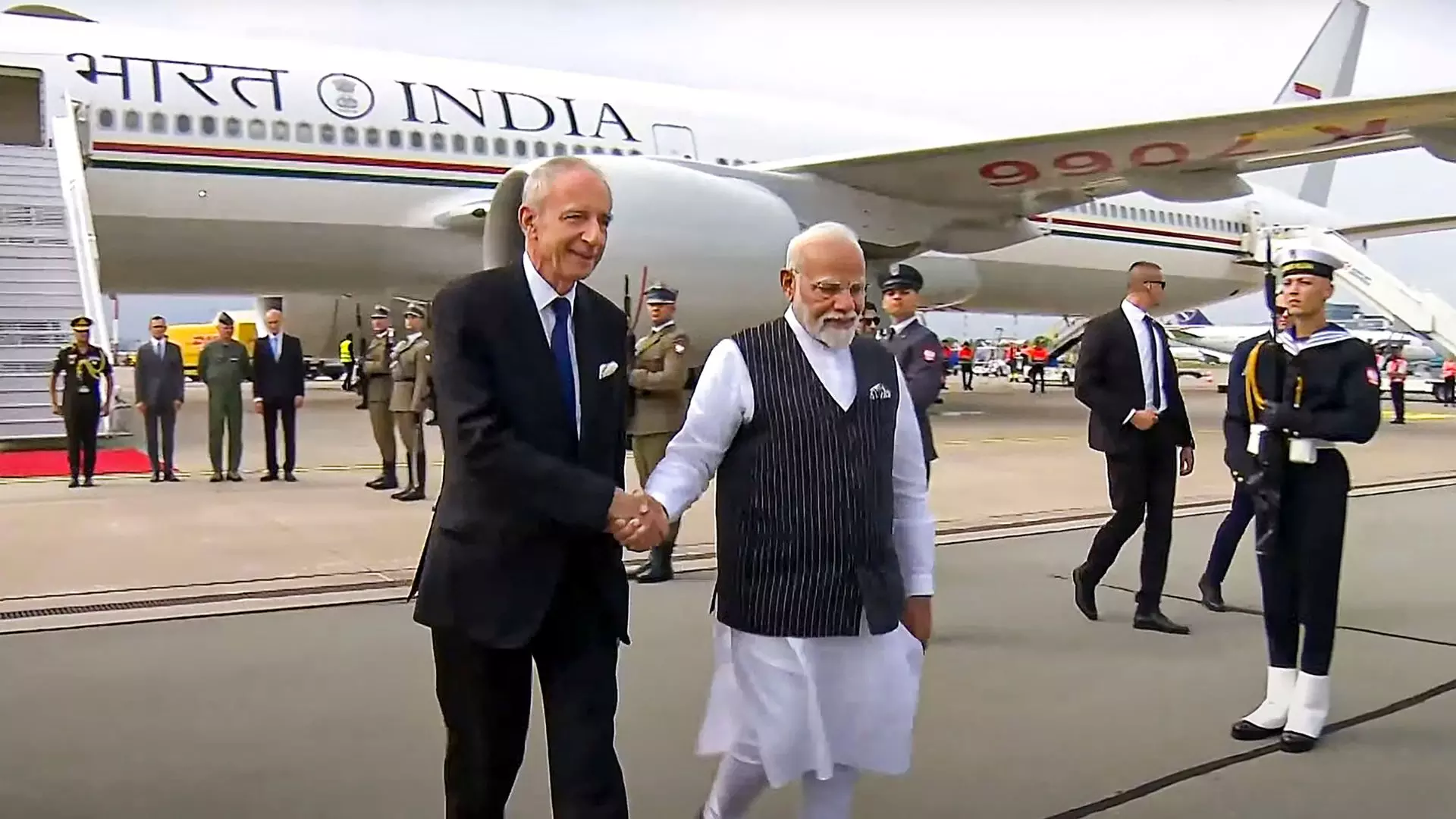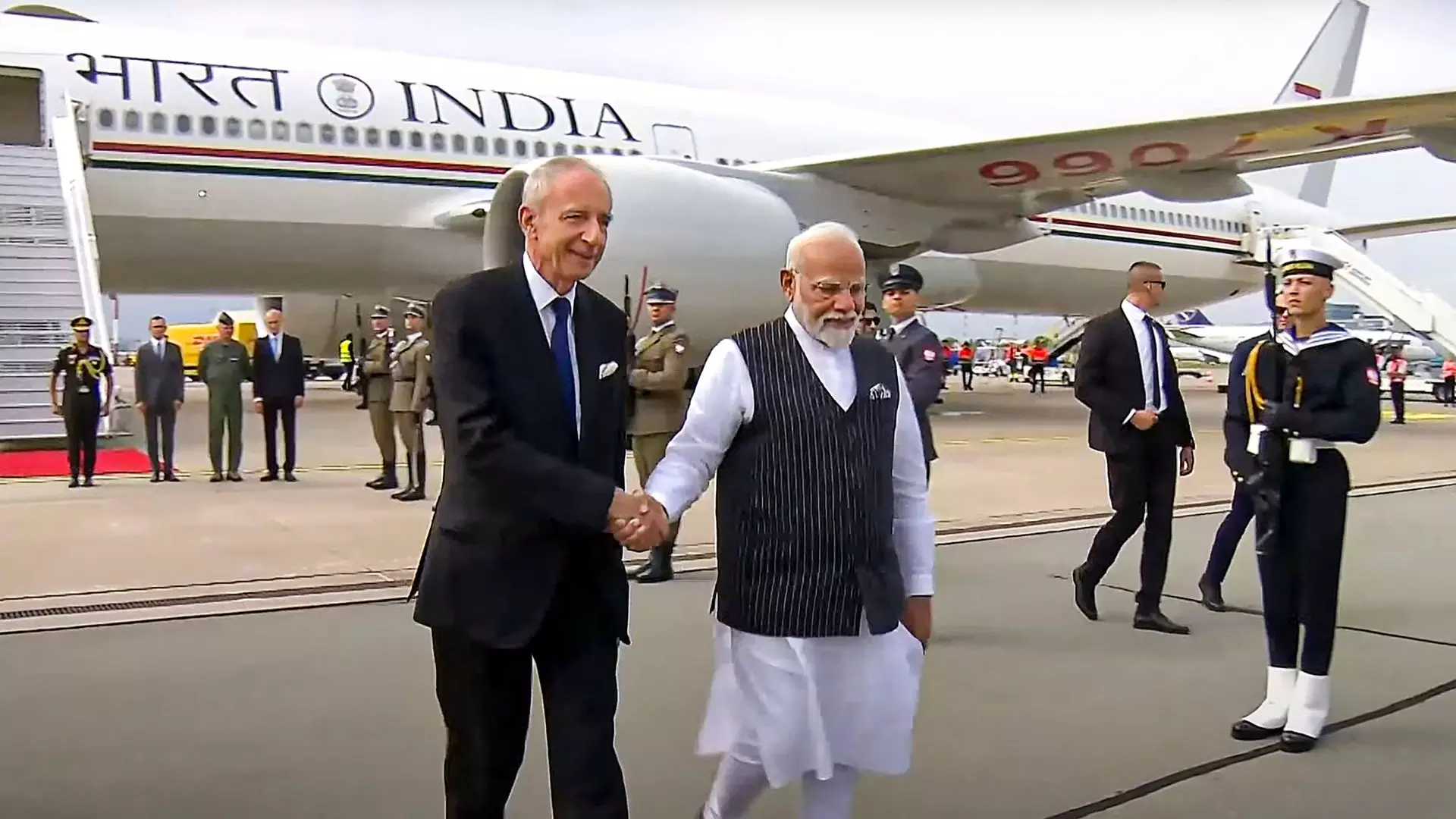
Prime Minister Narendra Modi is on a visit to Poland, starting August 21, and then swinging through Ukraine on August 23. It is logical to combine the two visits as no VVIP can fly directly to Kyiv as Ukraine, in entirety, is a war zone. Most foreign dignitaries use the Poland route.
The PM’s visit to Ukraine is not surprising as his trip to Moscow on July 8-9, while the 75th anniversary summit of Nato opened in Washington, caused diplomatic surprise, if not anguish, all across the West. Surely this was avoidable, when the proximity of India to Russia and the unwillingness to cut trade and military ties with Moscow was already irritating the United States and India’s other friends in the West.
If it is assumed that South Block did not simply err in the selection of dates, then logically was it based on the assumption that former President Donald Trump, who at that time was leading President Joe Biden in polls, was likely to be back in the White House come January 2025? A Trump victory, to take the reasoning further forward, would collapse the US and Western support to Ukraine. Consequently, Russian President Vladimir Putin could obtain a settlement based on the status quo, which Mr Putin could project as a victory. Therefore, throwing India’s lot with Mr Putin at that stage appeared to be a sensible gamble. But as the late British statesman Harold Wilson had once said, a week could be a lifetime in politics. The four weeks following Mr Biden’s disastrous performance in his first debate with Mr Trump, including a failed assassination attempt on the latter, turned the American presidential election upside down.
In the changed scenario, vice-president Kamala Harris as the Democratic nominee for President and Tim Walz, her running mate, are either ahead of or level with Donald Trump and J.D. Vance in half a dozen crucial swing states, which historically have determined the outcome of US presidential elections. The ongoing Democratic National Convention in Chicago is further fuelling their climb. With just over two months left for the US presidential elections, the race has become extremely tight.
In these changed circumstances, an outreach to Ukraine seems to be a logical step to contain the damage done to India’s image in the West by the untimely Moscow summit in July.
However, geopolitics is rarely static and has produced a new twist. Ukraine has for the first time militarily intruded into Russian territory in the Kursk region, piercing Russia’s unguarded south-western border. The Ukrainians have moved quickly along the rivers Seyn and Psei, utilising them to protect their flanks. They have so far occupied 1,250 sq km, captured some hundred-odd Russian soldiers, caused an exodus of civilians from the area and then destroyed three crucial bridges to keep the Russian troops from either escaping or receiving supplies and reinforcements. So far, the Russian offensive in Ukraine’s Eastern Donbas region has not weakened. It had been speculated that one of the reasons for Ukraine’s offensive into Russian territory was to compel Russia to divert military resources away from Ukraine’s eastern front. The coming weeks will show whether Ukraine can hold onto the Russian territory it has occupied while defending effectively on its eastern front. If they can do both, then the occupied enclave can be a useful negotiating chip for future peace talks.
The strategic impulse, to balance India’s perceived tilt towards Russia, exceeds the importance of trade and commerce with Ukraine, which in 2019-20 was just $2.52 billion. Mr Modi can be expected to repeat the standard Indian advice, which he also tendered in Moscow, that “solutions and peace talks cannot succeed amid bombs, guns, and bullets”. However, with Ukraine’s counter-offensive and Russian embarrassment, the two sides are further from ceasefire than ever before. Therefore, leaks from the Indian government on Mr Modi as peacemaker sound unrealistic.
The visit to Poland, besides enabling the transit to Ukraine, has different importance. It is the 70th anniversary of the establishment of diplomatic relations between the two nations. Also, a prime ministerial visit is taking place after 47 years. The last high-level visit from India was by vice-president Hamid Ansari in April 2017.
External affairs minister S. Jaishankar visited Poland in 2019. Indian exports to Poland in the period 2018-20 were around $2 billion. In the last two years, these have risen to nearly $4 billion. Indian investment in Poland is over $3 billion, mostly in the information technology field. Poland is a pioneer in clean coal technology, food processing, pharmaceuticals and chemicals. It is also a growing market for Indian textiles.
What sets Poland apart is its long tradition of Indology. Jagiellonian University at Krakow has had a Sanskrit chair since 1893. Yoga has been taught in Poland for a century. There are an estimated three lakh yoga practitioners and over 1,000 yoga centres. The Art of Living and Brahma Kumaris are active in propagating Indian culture.
India is also remembered for giving refuge to Polish orphans and other refugees during the Second World War. The Maharaja of Kolhapur set up the Valivade camp in Maharashtra and Jam Sahib of Navanagar a facility at Balachadi town near Jamnagar in Gujarat. The latter is popularly referred to in Poland as the “good maharaja”. Both have been called the Indian Schindlers, in remembrance of the saviour of Jews in Europe. Thousands of their descendants are in Poland and potentially India’s friends. The Indian diaspora in Poland numbers over 25,000, including 5,000 students. Several Indian states have bilateral agreements with Polish regions.
As a member of the European Union, Poland faced criticism since 2015 due to constitutional aberrations by the then ruling Law and Justice Party, which were seen as weakening the judiciary’s independence. The election of Donald Tusk as the new Prime Minister in December and his steps to moderate those measures has begun the normalisation of Poland’s relations with the EU. Earlier this year, funds began to be released, worth billions of euros, that were withheld due to democratic backsliding by the previous regime.
Mr Tusk was previously Prime Minister from 2007 to 2014, and the president of the EU’s European Council from 2014 to 2019. He heads a coalition government. Thus, Prime Minister Modi engaging a leader who is restoring democratic functioning is good for India’s image, especially in Europe, where concerns over Indian democratic backsliding have been audible.
